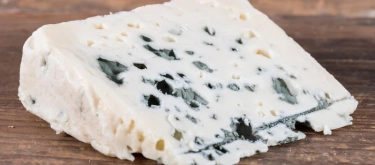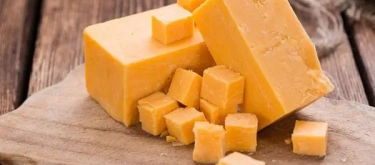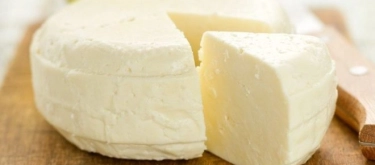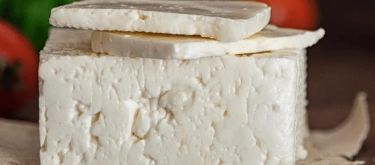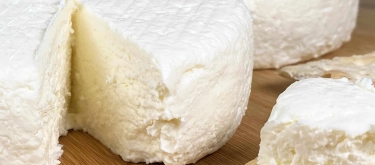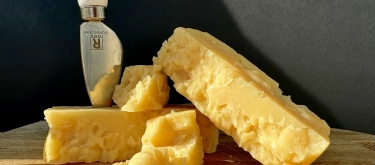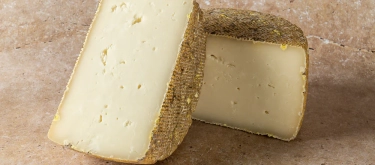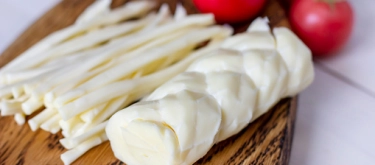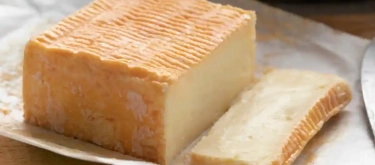Blue Cheese: Taste, Uses, Benefits and Harm
Blue cheese is a type of cheese that has been aged with cultures of the mold Penicillium, giving it characteristic blue or green veins. Known for its bold and often pungent flavor, blue cheese is a polarizing yet highly valued ingredient in both savory and sweet dishes. Its complex taste and creamy texture make it a favorite in gourmet cuisine.
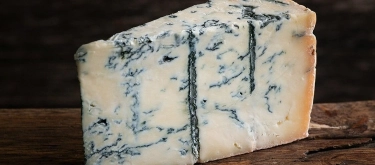
Primary Flavor Characteristics
Blue cheese has a strong, salty, and tangy flavor with earthy and slightly metallic undertones. The taste varies depending on the variety and aging process; some blue cheeses are mild and creamy, while others are intense and sharp.
Aromatic and Taste Nuances
Blue cheese has a pungent aroma, often described as musty, earthy, or even spicy. The flavor profile combines a creamy base with sharp, salty, and tangy notes that intensify with age, resulting in a unique taste experience.
Scientific Description of Taste and Aroma
- Aroma: Pungent, earthy, and slightly musty.
- Taste: Salty, tangy, with earthy and metallic undertones.
- Texture: Creamy and crumbly, with a slightly moist consistency.
In-Depth Flavor Analysis of Blue Cheese
Underlying Flavor Notes
Blue cheese has multiple layers of flavor that vary in intensity:
- Salty Brininess: The salt content in blue cheese is high, adding a sharp, savory element.
- Tangy Acidity: The fermentation process creates a tangy acidity that balances the creaminess.
- Earthy and Spicy Notes: The mold imparts earthy, almost spicy flavors, which are more pronounced in certain varieties.
- Creamy Sweetness: Some blue cheeses, like Gorgonzola, have a mild sweetness that rounds out their bold flavors.
Impact of Aging on Flavor
- Young Blue Cheese: Milder, creamier, with a more subtle tang and less pronounced pungency.
- Aged Blue Cheese: Intensely sharp and tangy, with a more pungent aroma and a spicier, more robust flavor.
Textural Qualities
Blue cheese is often soft and creamy, yet crumbly, with blue or green mold veins running through it. This creamy texture provides a rich mouthfeel that contrasts with its sharp flavor.
Culinary Uses of Blue Cheese
Primary Uses
- Salad Toppings: Crumbled blue cheese adds a sharp, creamy contrast to salads, particularly those with strong greens or fruit.
- Cheese Boards: Blue cheese is often paired with nuts, fruits, and honey on cheese boards for a gourmet experience.
- Sauces and Dressings: Blue cheese adds depth to creamy sauces and dressings, especially for steak, pasta, or as a dip.
- Burgers and Sandwiches: The bold flavor of blue cheese enhances the taste of meats, adding complexity to burgers and sandwiches.
- Desserts: Blue cheese pairs surprisingly well with sweet flavors, such as in dishes with honey, figs, or dark chocolate.
Ideal Pairings for Blue Cheese
- Fruits: Pears, apples, and figs balance blue cheese's saltiness with natural sweetness.
- Honey and Jam: Sweet spreads add a contrasting flavor, softening the sharpness of blue cheese.
- Red Wine and Port: Bold wines complement the intense flavor of blue cheese, enhancing its depth.
- Nuts: Walnuts and almonds add a crunchy texture that contrasts with the creaminess of blue cheese.
- Beef and Steak: The savory, umami taste of red meat pairs well with the bold, tangy notes of blue cheese.
Health Benefits of Blue Cheese
Key Nutrients and Benefits
- High in Calcium: Blue cheese is rich in calcium, supporting bone health and muscle function.
- Source of Protein: The protein in blue cheese contributes to muscle repair and overall health.
- Probiotics: The mold in blue cheese contains beneficial bacteria that support gut health and immune function.
- Phosphorus and Zinc: These minerals help with cell regeneration, immune health, and skin vitality.
- Anti-inflammatory Properties: Some studies suggest that the mold used in blue cheese may have anti-inflammatory effects.
Potential Precautions
- High in Sodium: Blue cheese is relatively high in salt, so moderate intake is recommended, especially for those monitoring sodium levels.
- Mold Sensitivity: Those with mold allergies should avoid blue cheese as it can trigger sensitivities.
- Fat Content: As with many cheeses, blue cheese is high in fat, so portion control is advisable.
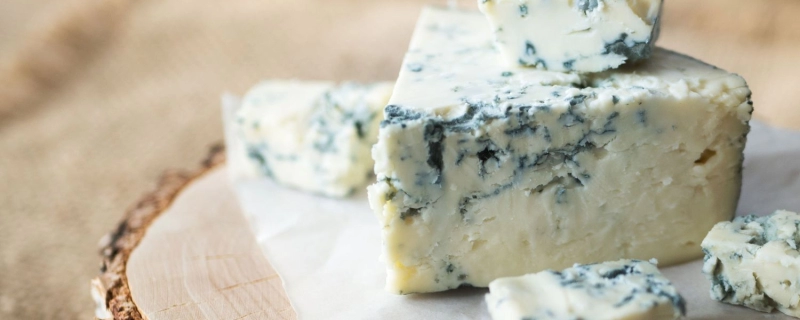
Tips for Choosing and Storing Blue Cheese
How to Choose Quality Blue Cheese
- Appearance and Aroma: Look for even veining of blue or green mold and a strong, yet pleasant aroma.
- Texture: Fresh blue cheese should be creamy and moist, not overly dry or crumbly.
Storage Recommendations
- Refrigeration: Wrap blue cheese in wax paper or parchment, followed by plastic wrap, and store in the refrigerator to maintain freshness.
- Freezing: Blue cheese can be frozen, though it may lose some texture; it’s best used in cooked dishes if frozen.
Fun Facts About Blue Cheese
- Historic Roots: Blue cheese has been enjoyed since ancient times, with origins in regions like Roquefort, France.
- Unique Aging Process: Blue cheese is aged with molds like Penicillium roqueforti, which gives it its characteristic veins and flavor.
- Diverse Varieties: Blue cheese includes a range of varieties such as Roquefort, Gorgonzola, and Stilton, each with distinct characteristics.
